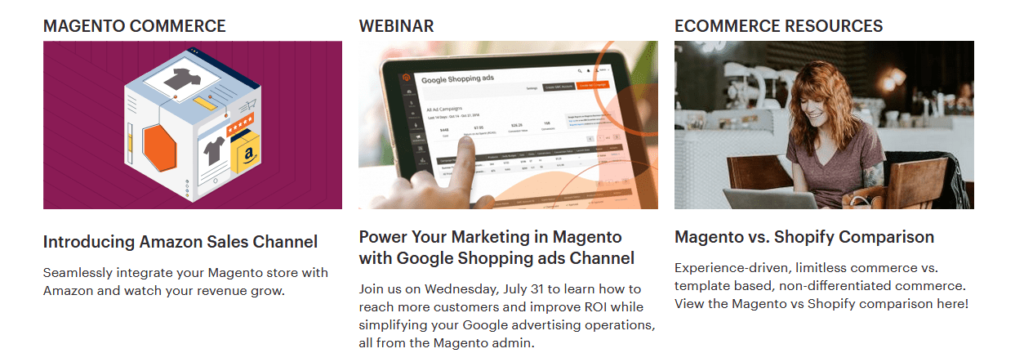Magento Review
Magento is a cloud e-commerce platform that has recently entered the Adobe family particularly suitable for medium and large companies and, unlike other software of the same category such as for example Prestashop, is aimed at users with professional web development experience or in any case companies with a budget available that allows them to take advantage of professionals with regard to site development.
In fact, Magento is not easy to use and it takes time to learn how to “handle” the available features, it is therefore not suitable for beginners, also considering its not very intuitive system. For developers, however, this software is less complex with a quick and easy self-hosting setup and all sections such as customers, products, promotions, sales and reports are grouped in the navigation menu.
Marketing and SEO features
Among the most interesting features of Magento is the possibility of being able to use marketing tools integrated into the platform to better manage the site, such as email marketing and ads. The advantages of having the main marketing tools available include the ability to send promotional coupons (even offline), dedicated offers, customer grouping based on specific characteristics, related products, up-sell and cross-sell, save of the cart when users leave the site, sending of the wishlist via email and sharing on social networks by users of purchases made on the site.
Some more advanced marketing features are only accessible to those using the Commerce version of Magento, such as abandoned cart recovery, store credits/gift cards, and a rewards program, but given the large number of extensions available, many features can be easily integrated even to the Open Source version.
As for the SEO tools are included in both versions of Magento and include: the Google Site Map, URL customization to better respond to SEO needs and the possibility to write meta information about products, categories and other content pages. In this way you can be sure to appear on search engines and be found easily by potential customers.

Templates and Web design
This platform includes a couple of templates already available for free, but if you want more choice, you have to buy those developed by third parties which cost around $500. The positive thing is that the more expensive templates already include advanced extensions and that it is possible to download templates compatible with Magento even from sites other than the official marketplace.
Design-wise, Magento Open Source is much more complicated than other platforms that include a theme editor within them; in fact to ccreate a theme from scratch you need the the help of a developer/designer, is required apurchase a third-party theme or theme builder, and use customization tools for dashboard (which may or may not involve coding). The platform is currently developing a Page builder to provide a more flexible drag and drop system without the need for technical and coding knowledge.
Customer Segmentation and Analytics
Magento allows you toclassify your customers based on demographics, sales history, cart and other user activity on the site. Once users are targeted, it is possible to send them specific promotions and contents, add coupons and discount codes to emails and newsletters.
This software does not have insight analysis inside, but it is integrated with Google Analytics and other tools that allow you to draw up reports on visits, sales, abandoned carts and much more.
How much does Magento cost?
As mentioned above, Magento offers 2 different versions: Magento Open Source or the free version freely downloadable from the site and the much more powerful and much more powerful Magento Commerce paid version complete, but decidedly more expensive even if in general the price is customized for each company.
Even using Magento Open Source, it is not certain that the management and implementation of the site are necessarily free, in fact it will be necessary provide a hosting and domain, theme and add-ons, an SSL certificate, as well as the need to have a payment processing partner. In addition to this, the cost of a developer for the site must be considered, because Magento is not very intuitive and suitable for everyone as software. We must also add the costs of plug-ins to add functionality to the site, as Prestashop also does, where some are free and others even reach $10,000 for a single extension.
PROS
- It is free to download.
- Great variety of features.
- Advanced customization.
CONS
- Requires advanced programming knowledge.
- Considering the extensions, it gets very expensive.








Leave a Reply